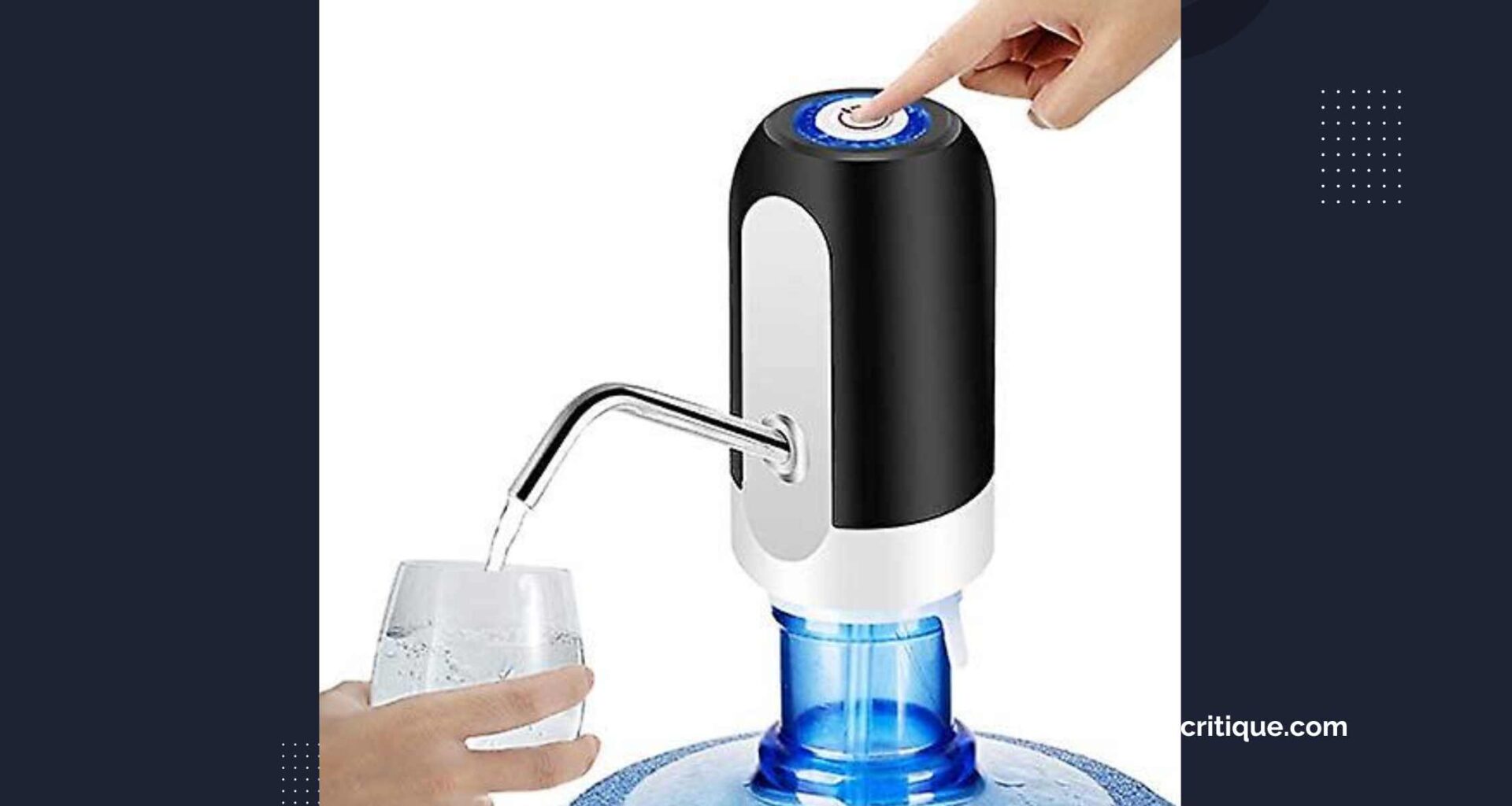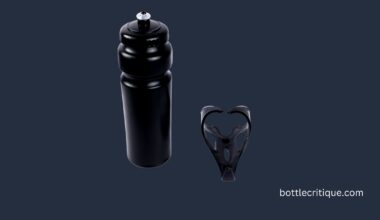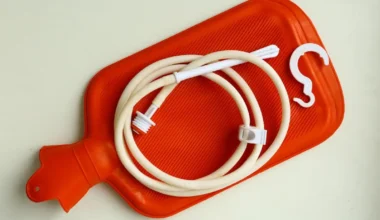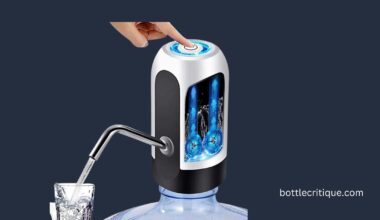Have you ever found yourself in a situation where your water dispenser runs out and you’re unsure how to replace the bottle? Don’t worry, you’re not alone. This guide is designed to help you with a step-by-step process to replace a water bottle on a dispenser with ease.
Why is this important?
Regularly replacing your water bottle ensures that you always have access to fresh, clean water, which is essential for good health. Moreover, learning how to do this simple task can save you time and the frustration of waiting for someone else to do it.
Ready to learn? Let’s get started!
Introduction: Why Replacing Water Bottle on Dispenser is Important for Hydration
Imagine a day without water. It’s impossible, isn’t it? Water is a vital necessity in our lives, and having easy access to it at all times is non-negotiable. That’s where water dispensers come in handy, ensuring that clean and fresh water is always available at your fingertips. However, the water dispenser can do its job only as long as it has a water bottle to dispense from, making it crucial to replace the water bottle promptly.
Why, you ask?
- Consistent hydration: Regularly replacing the water bottle on your dispenser means you always have access to water, helping you stay hydrated throughout the day.
- Water purity: If a water bottle is left on the dispenser for too long, it could potentially become contaminated. Regular replacement ensures you always have fresh, clean water.
- Prevents water shortage: Replacing the water bottle promptly prevents unexpected water shortages at inconvenient times.
Now that you understand the importance of replacing the water bottle on your dispenser, let’s learn the correct way to do it. Stay tuned!
Step-by-Step Guide: How to Replace Water Bottle on Dispenser?
Replacing a water bottle on a dispenser is an easy task, don’t you think? However, if not done correctly, you might end up with water all over your floor. But no worries, with this step-by-step guide, you’ll be a pro in no time!
1. Preparation
Before you start, you must ensure you have a full water bottle handy. It is also crucial to wash your hands thoroughly to maintain cleanliness.
2. Removal of the Empty Bottle
First, you need to remove the empty water bottle from the dispenser. To do this, firmly grasp the bottle’s neck and carefully lift it straight up. Be mindful not to tip the bottle as water may still be present in the reservoir.
3. Prep the New Water Bottle
Next, wipe the top of the new water bottle with a clean, damp cloth to remove any dust or debris. After that, gently remove the bottle’s cap or seal. Don’t forget, you should not touch the spout of the cap to prevent contamination.
4. Install the New Water Bottle
Now, it’s time to place the new bottle onto the dispenser. Align the bottle’s spout with the dispenser’s water intake, then slowly lower the bottle into place. The dispenser’s water intake should puncture the seal, allowing water to flow into the reservoir.
5. Check for Leaks
Once the new bottle is in place, check around the dispenser for any leaks. If you spot any, double-check the bottle’s positioning to ensure it’s properly seated. If leaks persist, consider consulting the dispenser’s user manual or contacting customer service.
Voila! You’ve successfully replaced a water bottle on a dispenser. Simple, right? Once you’ve done it a few times, it will become second nature. Remember, the key is to take your time and be careful to avoid spills or leaks. Happy hydrating!
What to Do If the Water Bottle is Too Heavy to Lift?
You might be thinking, “What if I can’t lift the water bottle?” That’s a legitimate concern. But don’t worry, we’ve got you covered. There are strategies you can use to manage those bulky water bottles.
Use a Bottle Lifter
If lifting heavy water bottles is a struggle, you might want to invest in a bottle lifter. It’s a simple tool designed to make the task easier and safer. It’s also a cost-effective solution, especially compared to the potential cost of an injury from incorrectly lifting a heavy bottle.
Ask for Help
There’s no shame in asking for help if the water bottle is too heavy. A friend, family member, or coworker can assist you with the task. Remember, it’s better to ask for help than risk injury.
Leverage Body Mechanics
Proper body mechanics can make a world of difference when handling heavy objects. Try to keep the water bottle close to your body as you lift, bend at the knees, not the waist, and use your leg muscles to get the bottle up to the dispenser.
Opt for Smaller Bottles
Last but not least, consider buying smaller water bottles if the larger ones are too heavy. They might need to be replaced more often, but the reduced weight can make the task much more manageable.
Remember, safety first. If the water bottle is too heavy, it’s important to use these strategies instead of trying to muscle through it. Your back and muscles will thank you.
Tips to Avoid Spilling Water While Replacing the Bottle
One of the most common challenges when replacing a water bottle on a dispenser is avoiding spills. But don’t worry, we’ve got you covered. Here are some helpful tips that will make the process less messy and more efficient.
1. Prepare Your Area
Before you even touch the water bottle, take a moment to prepare your area. This will ensure any spills are contained and easily cleaned up.
- Use a towel: Place a towel underneath the dispenser. It will catch any drips or spills that may occur during the replacement process.
- Empty the drip tray: Make sure to empty the drip tray before the replacement to avoid overflow.
2. Practice Proper Lifting Techniques
Next, it’s essential that you lift and maneuver the water bottle correctly to avoid spillage.
- Grip the bottle properly: Use both hands to firmly hold the neck of the bottle.
- Lift with your legs: Bend your knees, not your back, when you lift the bottle. This helps control the movement and reduces the chance of spills.
3. Use the Splash-Proof Spout
If your water bottle comes with a splash-proof spout, make sure to use it. These spouts are designed to minimize water splashes when you’re pouring the water into the dispenser.
4. Replace the Bottle Quickly
Lastly, speed is your friend here. The faster you can get the new bottle into place, the less chance there is for water to spill out.
Remember, the key to avoiding spills is preparation, correct lifting techniques, and quick bottle replacement. Follow these tips, and you’ll be a pro at replacing water bottles in no time!
How to Clean and Maintain Your Water Dispenser?
Keeping your water dispenser in good condition isn’t just about replacing the water bottle. It’s also about ensuring cleanliness and regular maintenance. Here’s how you can keep your dispenser spotless and functioning optimally.
1. Regular Cleaning
Regular cleaning is the most basic step. Unplug your dispenser, and use a damp cloth to wipe down all external surfaces. Don’t forget the spigots, as they can collect bacteria over time.
- Tip: Use a non-abrasive cleaner to avoid scratching the surface.
2. Deep Cleaning
Every once in a while, give your dispenser a deep cleaning. This involves removing and cleaning the drip tray, as well as the water cooler and hot tank (if your dispenser has these features). Make a solution of vinegar and water (1:1 ratio), and use this to clean these parts.
- Tip: Rinewell with fresh water to remove any vinegar smell.
3. Regular Maintenance
Besides cleaning, your dispenser may also need some regular maintenance. This could include checking and tightening any loose screws, ensuring the dispenser is level, and replacing any worn-out parts.
- Tip: Refer to your dispenser’s user manual for specific maintenance instructions.
Remember, a clean and well-maintained water dispenser not only lasts longer but also ensures that you have fresh and safe drinking water at all times.
Troubleshooting Common Issues When Replacing Water Bottle on Dispenser
When replacing a water bottle on the dispenser, you may encounter a few common issues. However, remember that most of these problems are easily fixable with the right knowledge and tools.
1. Water Leaking from the Dispenser
A common issue when replacing the water bottle is leakage. This can happen for a number of reasons.
- Improper Placement: The water bottle may not be seated correctly on the dispenser. Check for any misalignment and adjust the bottle properly.
- Cracked Bottle: The bottle might be cracked or damaged, causing water to leak. Inspect the bottle for any visible signs of damage.
- Faulty Dispenser: If the dispenser itself has a defect or damage, it can cause leakage. In this case, the dispenser might need professional repair or replacement.
2. Water Not Dispensing
If water is not dispensing even after the bottle is replaced, a few things could be wrong.
- Clogged Spout: The dispenser spout might be clogged. Clean the spout thoroughly to remove any blockages.
- Airlock: Sometimes, an airlock can form in the bottle, preventing water from dispensing. You can usually fix this by removing and reinserting the bottle.
- Faulty Valve: If the dispenser’s valve is broken or not functioning properly, water will not dispense. This problem typically requires professional repair or replacement of the valve.
3. Water Tastes Bad
Bad-tasting water can be a result of several factors.
- Stagnant Water: If the water in the bottle has been sitting for too long, it may develop an unpleasant taste. Ensure that you are replacing the bottle regularly.
- Dirty Dispenser: A dirty dispenser can also affect the taste of the water. Regular cleaning of the dispenser’s components can help maintain the water’s freshness.
- Low-Quality Water: The quality of the water itself may be the issue. In this case, you might want to consider switching to a different brand or source of water.
Addressing these common issues is straightforward, once you know what to look for. So, don’t let these challenges deter you from enjoying fresh, clean water from your dispenser!
Frequently Asked Questions About Replacing Water Bottle on Dispenser
When it comes to replacing a water bottle on a dispenser, you might have a few questions on your mind. And that’s quite alright. This section is specifically designed to answer the most commonly asked questions about this process. Shall we get started?
1. Is it necessary to clean the dispenser before replacing the water bottle?
Yes, it’s highly recommended. Cleaning your water dispenser regularly helps avoid the buildup of bacteria and other pathogens that might affect the quality and taste of the water. A simple wipe down with a clean, damp cloth should do the trick!
2. Can I replace the water bottle by myself?
Indeed, you can! All it takes is a bit of careful handling. It can be a bit heavy for some, so if you’re not confident in lifting the water bottle, it’s always wise to ask for help.
3. How do I know when to replace the water bottle?
Once the water level in the bottle drops below an inch, it’s time for a new one. This ensures you’ll never run out of clean, fresh water to drink.
4. What should I do if the water bottle leaks after replacing it?
In case the water bottle leaks after replacement, it’s possible that the bottle isn’t seated correctly. Try removing and reseating the bottle. If the problem persists, the bottle might be damaged and need replacement.
5. Is there a specific technique to replace the water bottle without spilling?
Well, there’s no one-size-fits-all answer to this. However, a general tip is to keep the bottle cap on until you’re ready to place it on the dispenser. This way, you minimize the potential for spillage.
6. What if the dispenser doesn’t dispense water after replacing the bottle?
If your dispenser isn’t dispensing water after a bottle change, it might need a few minutes to adjust. If it still doesn’t work, check to make sure the bottle isn’t empty or the dispenser isn’t blocked or broken.
Replacing a water bottle on a dispenser is straightforward once you get the hang of it. Don’t worry if you fumble a bit the first time. With practice, it gets easier!
Conclusion: Stay Hydrated with Easy Water Bottle Replacements
In conclusion, the task of replacing a water bottle on a dispenser is quite straightforward. It’s a skill that everyone can master with just a little practice.
Remember, staying hydrated is essential for maintaining good health and productivity, and an efficiently working water dispenser plays a key role in this. So, don’t let a water bottle replacement task intimidate you!
- Step 1: Ensure your hands are clean and dry before handling a new water bottle.
- Step 2: Remove the safety seal from the new water bottle, but ensure not to touch the spout to avoid contamination.
- Step 3: Hold the bottle by its neck, gently invert it, and place it onto the dispenser.
With these steps, you can easily replace the water bottle on your dispenser whenever it’s empty.
Remember, the key to mastering this task is practice. Don’t worry if you spill a little water during your first few attempts. Over time, you will get the hang of it and be able to replace the bottle without any spillage.
Preventative Measures
While replacing the water bottle, you should also take some preventative measures:
- Always use a clean water bottle.
- Never touch the spout of the bottle or dispenser to avoid contamination.
- Ensure the dispenser area is clean before placing the new bottle. By following this guide, you can ensure that you always have a supply of fresh, clean water at your disposal. So, keep your water dispenser running smoothly and stay hydrated!






